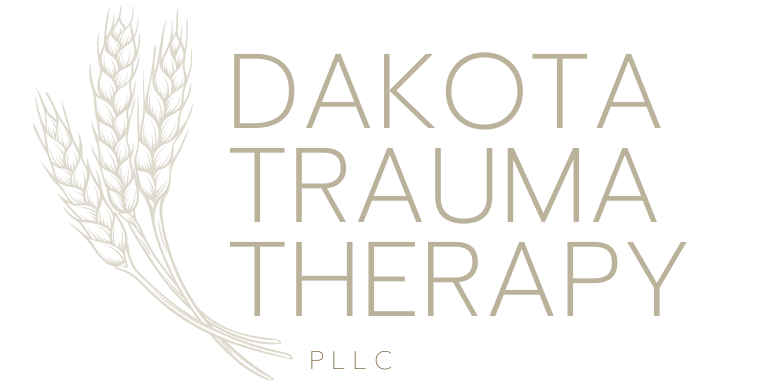Post-traumatic stress disorder (PTSD) is a significant mental health illness that can be caused due to the brain’s failure to comprehend a psychologically stressful experience. Many soldiers who have experienced combat violence suffer from PTSD (1); nevertheless, the illness affects individuals of diverse ages, vocations, genders, and ethnicities regardless of where they belong to.
PTSD is more common in the United States than in other Western countries, affecting 3.5 percent of people with women being twice as probable as males. (2)
Trauma-focused cognitive-behavioral therapy (CBT), a kind of therapy that focuses on the memories of the traumatic event or its significance, is one of the well-researched therapies for PTSD. Cognitive Processing Therapy (CPT), Prolonged Exposure Therapy (PE) are some of the therapies that come under this category. (3)
Eye Movement Desensitization and Reprocessing therapy (EMDR) is one of the well-researched therapy used to treat trauma and above all, this therapy is recommended by the World Health Organization (WHO) for PTSD. (4)
EMDR is founded on the notion that our brains strive to recover and attain optimal mental health, but that trauma may overwhelm our inherent power to recover and cause us to get trapped in our memories. Our negative and destructive connections with the traumatic events persist, and we may become hypersensitive to people, places, or things that recall us of that particular event.
EMDR works by having the person turn their efforts on the traumatic experience, as well as any related pictures, ideas, feelings, or emotions, to allow for healthy processing. All of this takes place under the supervision of a therapist, with bilateral stimulation, stress management techniques, and, most significantly, in a reliable environment.
It is considered that by integrating what we know about how the brain processes pain, EMDR can achieve what would require years of treatment without its aid. The study on EMDR for PTSD treatment is extensive, and a new meta-analysis assesses the most recent data on the efficacy of EMDR therapy for PTSD, which has proven to be quite effective. (5)
To understand EMDR treatment, it is necessary to first comprehend how PTSD affects people and what the common symptoms are faced by people with this condition.
PTSD
PTSD is caused by the brain’s inability to absorb a traumatic experience such as physical or sexual abuse, military brutality, a terrorist attack, a natural disaster, or another form of personal assault. (6) When an incident is particularly strong, it can overload the body’s processing mechanisms, making it difficult for the affected person to cope with the emotional discomfort.
As a consequence of any such traumatic event, troubling thoughts and feelings about the occurrence might linger long after the trauma has passed. Other PTSD signs include recollections or trauma reliving the original occurrence; sorrow or rage; feeling alienated or estranged from others; and having significant negative reactions to something as minor as an unintentional touch or excessive sounds.
Post-traumatic stress disorder symptoms can appear as quickly as a month after a traumatic event, but they can also take years to emerge. These symptoms cause major problems in social and professional situations, as well as in personal relationships. They may also make it increasingly challenging for you to go about your daily routine.

Types of PTSD Symptoms
Intrusive memories, avoidance, unfavorable changes in thinking and attitude, and bodily and emotional reaction alterations are the four primary types of PTSD symptoms.
Re-experiencing the Trauma
Individuals with PTSD suffer flashbacks, which make them feel as though they are reliving the event. Recurrent memories or nightmares about the traumatic incident, suspicious thoughts, and physical symptoms such as heart palpitation or sweat are all examples of flashbacks that result in reliving the traumatic occurrence. (7)
Avoidance Symptoms
This is a frantic attempt to avoid any potential triggers, such as an event, a conversation, or a thought that might evoke memories of your trauma. As a result of avoidance symptoms, people frequently isolate themselves. (8)
Arousal Symptoms
A person with PTSD may be agitated and anxious all the time and struggle to calm. They may be very aware of possible dangers and easily frightened. This mental state is known as Hyperarousal. Hyperarousal causes trouble focusing, violent or aggressive outbursts, high-functioning anxiety, and negative feelings, as well as taking risks, being irresponsible, or being destructive, all of which lead to detrimental behavior. (9)
Cognition and Mood
Following a traumatic event, a person’s cognition and mood symptoms may begin or worsen, making them feel disconnected from friends and family. Cognition and mood symptoms include difficulty recalling essential information of the tragic occurrence, pessimistic views about oneself or the world, and distorted recollections of the tragedy that contribute to guilt feelings. (10)
Despite the potential for a wide range of adverse effects, living a normal, functioning life with PTSD is quite doable. The intensity and appearance of the condition will vary based on the incident and how the psychological impact of that experience appears in each individual’s life.
How Does EMDR Work for Treating PTSD?
When a person experiences trauma but is unable to properly process and heal from it, it is kept in long-term memory. EMDR serves as a trauma treatment technique that tries to connect a person with visions, emotions, ideas, sensations, and everything related to a traumatic experience. EMDR helps in recovering traumatic memories from long-term memory and bringing them back into short-term memory or working memory, where they can be completely processed and healed. (11)
EMDR employs adaptive resolution to convert trauma from a potentially unpleasant and provoking experience into one that is no longer linked with unpleasant, charged emotional, physical, behavioral, or cognitive consequences. The cornerstone to adaptive resolution is relearning, which involves replacing the trauma’s damaging and distressing information with new, more adaptive knowledge and connections. (12)
The use of bilateral stimulation is arguably one of the most intriguing features of EMDR psychotherapy. Bilateral stimulation improves information processing, allowing for the development of new, more adaptive connections with the trauma. The therapist will have the patient follow their fingers from side to side. Additional techniques such as hand tappers or auditory stimulation may also be utilized. (13)
When a person recalls a traumatic event while focusing on bilateral stimulation, the trauma begins to lose its power. The image of the trauma that the afflicted individual holds will gradually become less distressing, and accompanying conditions of anxiety and melancholic depression will begin to fade.
EMDR sessions must take place in a secure setting, under the supervision of a professional therapist, and with the use of relaxation techniques for EMDR treatment to be as effective as possible. When used properly, EMDR can help with thorough information processing, new learning, emotional distress reduction, and the emergence of new insights.

Phase and Time Periods of EMDR
EMDR therapy is divided into 8 steps, which together are focused on three different time periods.
Time Periods
- The past when the event that caused or exacerbated the trauma was experienced.
- The present, where attention is focused on current events that are creating concern.
- The future for which efforts are made to build the necessary abilities and attitudes for positive growth.
Phases
Phase 1:
The therapist collaborates with the client to identify the trauma or trigger event from the survivor’s history that may be important to the treatment. This might involve not only the traumatic experience but also previous occurrences from the individual’s history. During this step, the treatment strategy is created.
Phase 2:
The therapist offers the person a range of stress reduction and visualization strategies that they may employ in between sessions to help them cope with their mental anguish.
Phase 3-6:
EMDR therapy techniques are used to analyze a target memory. To begin this phase of therapy, the patient must identify the emotions and physical sensations associated with the experience, visual imagery linked with the recall, a negative judgment about themselves associated with their suffering, and the desired positive belief.
The therapist will ask the person to assess the strength of the negative and positive beliefs that they have chosen. The individual is then told to concentrate on the images, unpleasant thoughts, and physical reactions associated with the target memory while the therapist guides them via bilateral stimulation.
The person rates the strength of the negative beliefs during each set of these steps. When the person no longer expresses pain over the memory, the therapist will continue the cycle, this time concentrating on the previously established positive belief.
Phase 7:
The trauma survivor keeps a diary of any residual unpleasant thoughts or feelings that come up during the week during the closure phase. The therapist obtains information to assist the individual continue to work through their suffering while reminding them of self-calming strategies learned throughout therapy by examining the person’s diary of negative feelings or thoughts.
Phase 8:
It is the final step in which the therapist and the client evaluate their progress and decide whether or not more EMDR therapy is appropriate, required, and likely to be useful.

Research on the Efficacy of EMDR Therapy for PTSD
EMDR therapy appears to be an effective treatment for PTSD in several independent and controlled trials. It is even one of the Department of Veterans Affairs’ top PTSD treatment recommendations. (14)
In a 2012 research of 22 persons, EMDR treatment was found to assist 70% of those with psychotic illness and PTSD. It was discovered that after therapy, their hallucinations, delusions, anxiety, and depression symptoms were considerably improved. The study also discovered that symptoms did not worsen as a result of therapy. (15)
When EMDR treatment was compared to conventional prolonged exposure therapy in research, it was shown that EMDR therapy was more successful in alleviating symptoms. The research also revealed that those who had EMDR treatment had a reduced dropout rate. Both, on the other hand, showed a decrease in traumatic stress symptoms such as anxiety and sadness. (16)
Numerous controlled trials on small sales have also shown evidence that EMDR treatment is not only beneficial in the short term but also has long-term impacts. People in one research were examined many months after receiving either standard care (SC) or EMDR therapy for PTSD. They observed that EMDR was substantially more effective in decreasing PTSD symptoms during and shortly after therapy. They also noticed that individuals retained these advantages even after the therapy finished throughout the three- and six-month follow-ups. Overall, EMDR treatment was observed to provide patients with a longer-lasting decrease in symptoms than SC. (17)
Wilson et al. conducted a meta-analysis in 2018 that looked at 37 trials to see if EMDR therapy for PTSD was effective. The lack of consistency and methodological quality in these studies is one of the primary drawbacks, therefore the objective of this most current review research was to look at the best evidence for EMDR. Only trials with a control group were considered, with the control group being either a waiting list with no intervention or some form of PTSD alternative therapy. In terms of research design, the number of people recruited, number and length of treatments, and follow-up time, there was a lot of variation amongst the studies. There were also variations in outcomes used to assess PTSD, anxiety, and depression symptoms, as well as inconsistencies across the several scales utilized for evaluation. Despite these constraints, researchers discovered that EMDR treatment was substantially more successful in decreasing PTSD symptoms than the control or other therapeutic approaches. (18)
Given the apparent good findings of the research mentioned above, it can be concluded that EMDR considerably improves PTSD diagnosis and symptoms over time when compared to relaxation treatment and waiting lists. It lowers PTSD, anxiety, and depression symptoms over time, however prolonged exposure treatment may be preferable in decreasing depressive symptoms only. (19)
Things to Consider before Trying EMDR Therapy for PTSD
EMDR treatment is seen to be quite safe, with far fewer adverse effects than prescription medicines. However, you may encounter certain negative side effects. The heightened awareness of thought that EMDR treatment generates does not cease when the session finishes. This might make you feel dizzy. It can also result in intense, realistic nightmares. (20)
EMDR treatment is commonly used in several sessions to treat PTSD. This implies that it does not function immediately. Because of the increased attention, the beginning of treatment can be quite upsetting for those who are dealing with traumatic situations. Although the therapy will most likely be helpful in the long term, the process of treatment may be emotionally draining.
What to Expect from your First EMDR Session for PTSD?
Every EMDR therapy session is unique, however, the initial EMDR session is anticipated to include a discussion of the patient’s history and details about the traumatizing event and treatment goal. The first session usually involves the following:
Knowing your Therapist
You will spend a few minutes getting to know the therapist if you do not already know them. You are encouraged to inquire about their EMDR experience. It is crucial to pay attention to their personality and ensure you feel at ease with them since you will not feel comfortable discussing painful memories if you do not feel comfortable with your therapist.

Discussion about your Childhood
As previously stated, the first phase of the EMDR treatment involves the history-taking part. This implies that you and your therapist discuss your childhood, family home, parents, and siblings. You might also discuss your mental health as a child. This may seem unusual at first, but you will become used to your therapist and the procedure with time.
Discussion about your Negative Beliefs
Your therapist needs to know about any negative beliefs you have taken as a fact to develop an effective treatment strategy. You are expected to be upfront and honest in this setting. Your therapist will assist you in combating these beliefs, but you must first discuss them.
Discussion about Events that Cause you Any Sort of Disturbance
You will be asked to discuss painful events, problems, circumstances, feelings, and memories with your therapist including both past and current challenges in your conversation. The therapist will assist you by encouraging you to explain how you are feeling physically, emotionally, and mentally. You may find it difficult to express what you are feeling but do your best. To ensure the success of the therapy, make sure you do not overlook any details.
Conclusion
EMDR therapy is beneficial in the treatment of trauma and post-traumatic stress disorder (PTSD). Some people might prefer this therapy instead of using prescription medicines, which might have unpleasant side effects. Some may notice that EMDR treatment improves their medication’s efficacy.
Consider EMDR therapy if you or someone you know is suffering from PTSD. This treatment has a lot of research behind it, and the risks are negligible. If you decide to explore this type of therapy, make sure you work with a qualified therapist and plan sessions that are at least 60 minutes long. You will have a better chance of succeeding if you do this.

